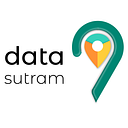Top Trends in Geolocation for 2021
Location intelligence (LI) technology has evolved at a faster pace. Companies are discovering new use cases for LI, from crisis management and field force monitoring to supply chain management.
A recent report suggests that the global location analytics market is set to reach $26.7 billion in 2025, up from $13.8 billion in 2020. From smart city planning to navigation in the post-pandemic world, location intelligence will play a vital role in the future.
Let’s take a look at some of the key trends that will shape the localization industry in 2021.
1) Manage the COVID-19 crisis
The global pandemic has dramatically increased the demand for geographically relevant information. He helped the world realize the importance and potential of maps and their value as a powerful communication tool. Data from LI and the Geographic Information System (GIS) also helped governments and medical authorities create dynamic COVID-19 panels like the one created by Johns Hopkins University. The panel continually updates relevant information and key statistics on active cases, recovery rates, deaths, proximity, spread, medical centers, and testing facilities, among others.
Location analytics and AI-enabled dashboards will help you identify trends, make quick, informed decisions, and take the right actions based on real-time information to slow the spread of the coronavirus.
2) Smart urban planning
Location intelligence is actionable information that helps the public and private sectors identify patterns and make strategic decisions. It helps companies and decision-makers use geospatial data to gain business insight. LI will assist in key areas such as urban planning, transportation, natural disasters, and park preservation, among others.
Location intelligence technology already plays a vital role in helping city developers make smart decisions about project conservation and creating sustainable green spaces in and around the city. In urban development, developers can take advantage of LI for 3D planning, which is essential for urban planning.
Global smart cities are revolutionizing transportation by using location analytics to improve traffic and optimize commuting. Urban planners also use LI data to understand traffic patterns and find solutions to traffic problems with new construction or different modes of transport. In the coming years, smarter local governments could increase their use of geolocation tools to help their citizens get to know their city and surroundings better.
3) Personalized customer experience
A rich customer experience and personalized branding messages are essential factors for companies to develop their customer base. Accurate, actionable information is already helping retailers attract more users. According to a recent Forbes survey, 75% of retailers rated LI as essential to their revenue growth strategies.
Restaurants and retail stores also use location analytics in their stores to enable certain features in their apps. This gives consumers easy access to information about unused gift cards and the history of their purchases or food orders. The main purpose of these functions is to increase inflow and also attract existing customers. It also functions as a highly contextual, location-based data marketing tool to improve sales.
Consumers can receive a coupon for a specific product as soon as they enter their favorite clothing store. The BFSI sector can also leverage LI data to provide personalized banking services such as credit cards and loan offers to its customers. Comprehensive, contextual LI data can help retailers deliver a more engaging and personalized shopping experience for their consumers.
4) Interior mapping
Internal mapping is made easier using LI data obtained from WiFi networks, beacons, and GPS apps. Users can get integrated 3D geospatial views.
In the case of airports, passengers will be able to visualize their journey and discover the main points of interest, such as cafes, restrooms, concourses, shops, restrooms, and security controls. Internal mapping opens up a series of possibilities that were not easily accessible for strategic decision making, marketing, and business intelligence in the business environment, adding value to the user.
5) Disaster Management
The average global economic loss from natural disasters around the world was about $232 billion in 2019. Disaster management today requires real-time information and analytics. The deployment of LI data can be relevant to various phases of disaster management, including prevention, mitigation, response, and relief.
With the latest data at their disposal, authorities can assess disasters like a tornado or wildfire and make informed decisions in such a difficult environment. Sharing critical information with first responders and relief agencies allows for better disaster planning and management, thus ensuring community and citizen safety.
Accurate and up-to-date LI data will help companies mitigate risk and coordinate disaster and emergency recovery and response efforts.
